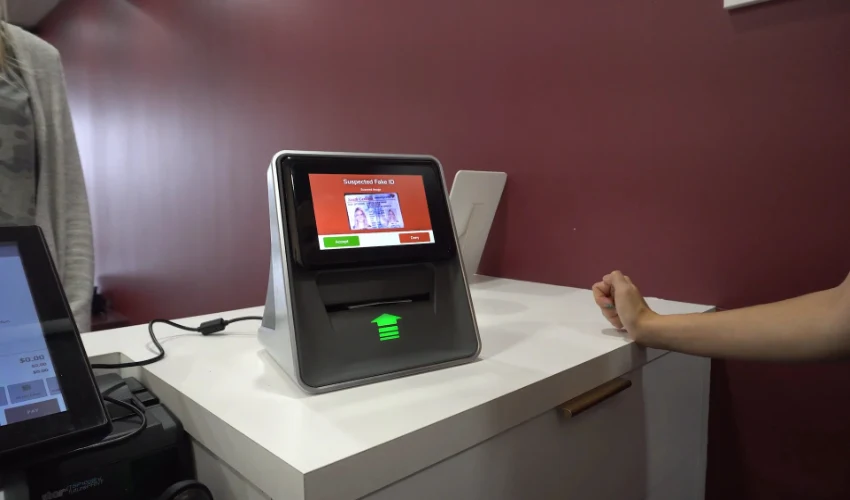In today’s digital age, identity verification is more crucial than ever. Scannable IDs have revolutionized security, authentication, and convenience across various industries. From driver’s licenses to employee badges and event tickets, the technology behind these IDs plays a vital role in ensuring security and efficiency. In this article, we will explore the different technologies that make scannable IDs possible, their applications, and their future developments.
Understanding Scannable IDs
Scannable IDs are identification cards embedded with machine-readable elements such as barcodes, QR codes, magnetic stripes, RFID (Radio Frequency Identification), or NFC (Near Field Communication) chips. These IDs can be scanned using specialized devices or mobile applications to quickly retrieve and verify information. The core purpose of scannable IDs is to enhance security, prevent fraud, and facilitate seamless transactions.
Types of Scannable ID Technologies
- Barcode and QR Code Technology
One of the most common technologies used in Scannable ID is barcodes and QR codes. These codes store essential information, such as a unique identifier or encoded personal data, which can be quickly accessed through scanners or smartphones.
- Barcodes: Typically used in driver’s licenses, student IDs, and membership cards. They contain a limited amount of information and require a dedicated barcode scanner.
- QR Codes: More advanced than barcodes, QR codes can store larger amounts of data and can be scanned using mobile devices. These are commonly used for event tickets, digital passes, and authentication purposes.
- Magnetic Stripe Technology
Magnetic stripe technology has been a standard for decades in credit cards, hotel key cards, and ID badges. The stripe stores encoded data that is read when swiped through a magnetic reader. Though widely used, this technology is vulnerable to wear and tear and can be susceptible to skimming attacks.
- RFID (Radio Frequency Identification) Technology
RFID technology enables contactless scanning, allowing users to simply wave or tap their ID near a reader. RFID chips contain encrypted information that enhances security and prevents unauthorized access.
- Applications: Used in access control systems, employee badges, passports, and public transportation cards.
- Benefits: Faster processing, reduced physical contact, and increased durability compared to barcodes and magnetic stripes.
- NFC (Near Field Communication) Technology
NFC is a subset of RFID technology but operates at a shorter range. It is commonly used in smartphones, payment cards, and modern digital IDs.
- How It Works: NFC allows devices to communicate by bringing them within close proximity (usually a few centimeters). This technology is widely used for mobile payments, digital IDs, and keyless entry systems.
- Security: Highly secure due to encryption and authentication protocols, making it a preferred choice for modern scannable IDs.
Applications of Scannable IDs
- Government and Legal Identification
Government-issued IDs, such as passports and driver’s licenses, use scannable technology to store biometric data, personal information, and security features that prevent counterfeiting.
- Access Control and Security
Businesses, schools, and government institutions rely on scannable IDs for access control. Employees and students use these IDs to enter restricted areas, ensuring that only authorized personnel gain entry.
- Financial Transactions
Banking and financial institutions incorporate scannable IDs for authentication and fraud prevention. Contactless payment cards and mobile wallets utilize NFC technology for secure transactions.
- Healthcare and Medical Records
Hospitals and clinics use scannable ID technology to manage patient records, streamline check-ins, and ensure accurate medication administration.
- Ticketing and Event Management
Concerts, sports events, and public transportation systems use QR codes and NFC-enabled tickets for quick and secure entry.
Security Features in Scannable IDs
With the rise in identity theft and fraud, security is a top priority in scannable Idbook technology. Key security measures include:
- Encryption: Data stored on scannable IDs is encrypted to prevent unauthorized access.
- Holograms and Watermarks: Physical security features reduce the risk of counterfeiting.
- Two-Factor Authentication: Some scannable IDs require an additional security step, such as PIN entry or biometric verification, for enhanced protection.
- Blockchain Technology: Emerging as a secure method to verify and authenticate digital IDs, reducing the risk of forgery and identity theft.
Future Trends in Scannable ID Technology
- Digital and Mobile IDs
As technology advances, physical IDs are gradually being replaced by digital IDs stored on smartphones. Mobile driver’s licenses and digital passports are becoming more prevalent, offering convenience and security.
- Biometric Integration
Biometric authentication, such as fingerprint and facial recognition, is being integrated into scannable ID systems to further enhance security and prevent identity theft.
- Blockchain-Based IDs
Blockchain technology is gaining traction in digital identity verification, providing decentralized and tamper-proof authentication systems that offer enhanced security and privacy.
- AI-Powered Verification
Artificial intelligence is being utilized to verify identities more accurately by analyzing patterns and detecting fraudulent activities in real-time.
Conclusion
Scannable ID technology has become an integral part of modern security and authentication systems. From barcodes to RFID and NFC, these technologies are continuously evolving to offer greater security, convenience, and efficiency. With advancements such as mobile IDs, biometric authentication, and blockchain integration, the future of scannable IDs promises enhanced protection and seamless user experiences. As technology progresses, industries must continue to innovate and adopt secure ID verification methods to stay ahead of fraud and security threats.
